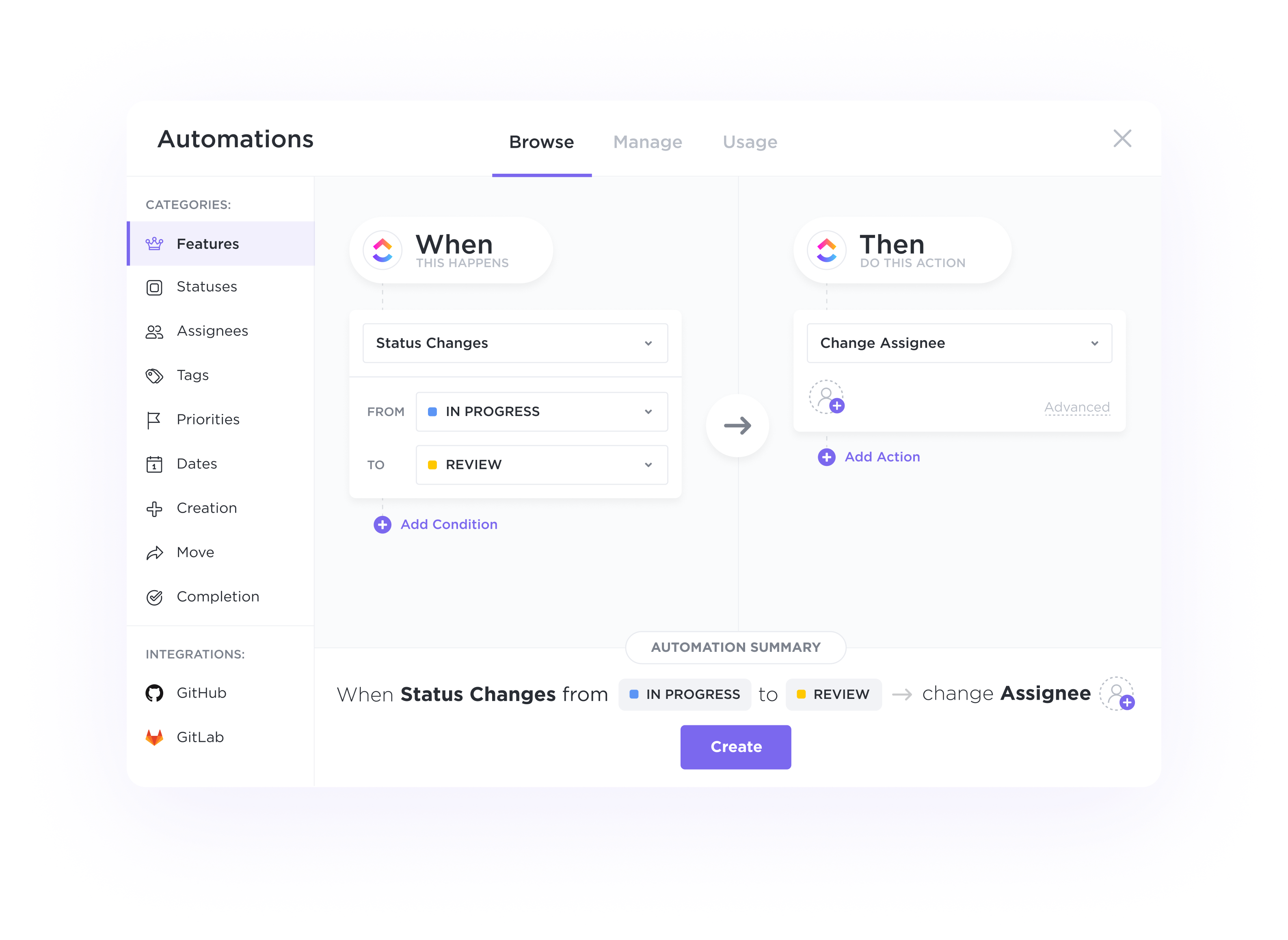Relationships
Build the perfect customer database.
Create your ideal system to store and analyze contacts, customers, and deals. Add links between tasks, documents, and more to easily track all your related work.

Gantt Charts
Personalize your customer relationships effortlessly with ClickUp's CRM software designed specifically for Environmental Scientists. Streamline your workflows, track interactions, and manage data efficiently to drive meaningful connections and boost productivity. Try ClickUp today and experience a seamless CRM solution that caters to your unique needs.
Free forever. No credit card.
Relationships
Create your ideal system to store and analyze contacts, customers, and deals. Add links between tasks, documents, and more to easily track all your related work.

Automations
Automatically assign tasks for each stage of your pipeline, trigger status updates based on activity, and switch priorities to alert your team on where to focus next.

A CRM for environmental scientists can centralize all research data, findings, and reports in one platform. This ensures that all team members have access to the latest information and eliminates the risk of data being scattered across various systems or documents.
CRMs can help environmental scientists track fieldwork activities, sample collection, and analysis. By recording these details in the CRM, researchers can easily monitor progress, ensure proper sample handling, and maintain accurate records of sample locations and results.
CRM software can assist environmental scientists in organizing project timelines, setting deadlines for tasks, and sending reminders for important milestones. This feature helps in project planning, resource allocation, and timely completion of research projects.
Collaboration is essential in environmental research. A CRM facilitates collaboration by allowing team members to share information, insights, and updates in real-time. This fosters a collaborative environment where researchers can work together efficiently and leverage each other's expertise.
CRMs can provide tools for monitoring and analyzing environmental data trends over time. By visualizing data trends, scientists can identify patterns, correlations, and anomalies that may inform future research directions or policy recommendations.
CRM software helps environmental scientists by centralizing research data, facilitating project management, tracking field observations, analyzing trends, and improving collaboration among team members for more efficient and organized research processes.
Environmental scientists should look for CRM software with features like customizable data fields for tracking environmental data, collaboration tools for team projects, integration with mapping software for spatial analysis, and reporting capabilities to monitor and analyze environmental trends effectively.
Yes, CRM software can integrate with GIS software, data analysis tools, and other applications commonly used by environmental scientists, facilitating seamless data sharing, streamlined workflows, and enhanced collaboration for more efficient research and analysis.